Let’s be honest here, being present in the moment sounds good in theory … but in practice, we suck at it 99.9% of the time.
How many times have you found yourself making all these fancy mental plans of “being as present as you possibly can” and imagining yourself as a Zen-master-to-be or advanced yogi in the making … and then a few minutes later you’re crunching down a packet of Doritos and staring vacantly at the Instagram stream on your phone?
Can you relate to this frustrating phenomenon?
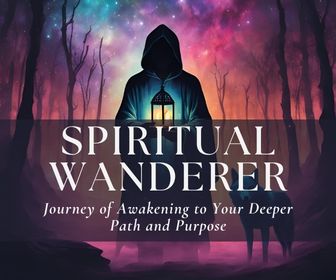
Spiritual Wanderer Course:
Being a lone wolf and a spiritual wanderer is a sacred calling in life – a unique and alchemical path of awakening. You don’t need to feel lost, alone, or stuck on your journey any more. It’s time to meet your soul’s deep needs for clarity, self-acceptance, and empowerment. Let us show you how …
Since interest in meditation and mindfulness blossomed in the 1990s there has been endless talk about the importance of “being in the present moment,” practicing mindfulness diligently, and meditating every day.
It seems like everywhere we look in the realm of wellness, self-help, and spirituality, being present is glorified as the highest of virtues. And I have nothing against that because it’s true. Being present is really the only sane way to live life.
But there’s one sticky issue that I’ll cover in this article, along with some down-to-earth advice for how to be more present each day.
Table of contents
What Does ‘Being Present’ Mean?
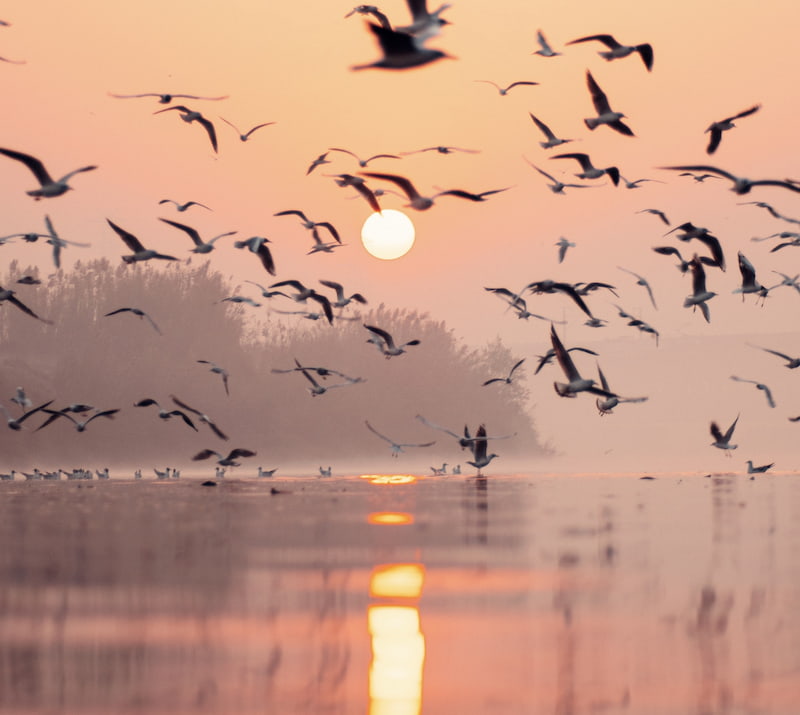
Being present simply means inhabiting this moment without getting lost in thoughts about the past or the future. When we’re being present, we’re vividly awake and conscious of what is going on in the here-now.
A definition of being present often used is quoted from professor and founder of Mindfulness-Based Stress Reduction, Jon Kabat Zinn, who defines the present moment (or mindfulness) as:
… paying attention, on purpose, in the present moment, non-judgementally.
The Power of Presence: Why it’s the Solution to Nearly Everything
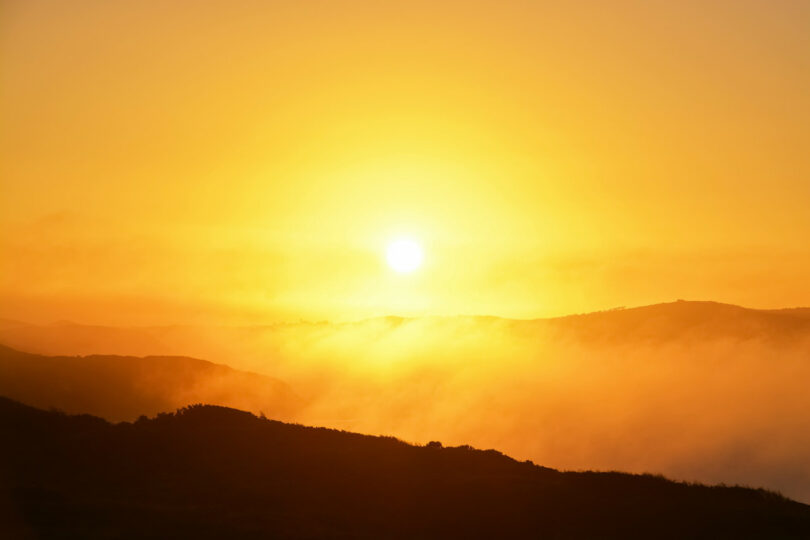
With popular books like ‘Be Here Now’ by guru Ram Dass published in the 1970s and ‘The Power of Now’ published in the 2000s by spiritual teacher Eckhart Tolle, most of us on the spiritual path are aware of the power of being present.
We can recognize that when we’re fully living in the here and now, we’re not suffering as much from the baggage of the past or future anxieties.
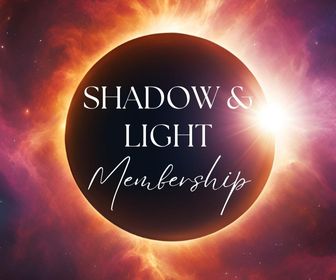
Shadow & Light Membership:
⭐️⭐️⭐️⭐️⭐ "Receiving these messages is a beacon of light and hope for me in currently very challenging times. The words of wisdom speak right to my soul, guiding and encouraging me further on my path. I highly recommend Shadow & Light to everyone who seeks to develop and cultivate a relationship with the Inner Self." – Karin
Being present helps us to tend to our needs, be more thoughtful and empathetic with others, make wiser and more conscious choices, listen to our Soul’s deeper impulses, slow down and appreciate life, and experience states of joy, awe, and peace.
Furthermore, when we’re present and are truly ensouled in the here-now, we’re also less identified with the fragmented and contracted sense of self that we call “ego.”
The ego or sense of “me” – which is essentially just a conditioned habit of thought that is changeable, permeable, and ultimately illusory – dissolves when we’re in the present.
The result of this temporary ego dissolution is a feeling of more freedom, social connectedness, and even spiritual Oneness.
All in all, being present is powerful because it is the only place or space in which we can feel truly alive, at peace, and whole.
But there’s one major pitfall most of us tend to make when we’re trying to be “more in the present moment.” We’ll explore that next.
Why is Being in the “Present Moment” So Damn Hard?
I actually made a video about this question a while ago, so if you feel like watching my explanation (shared alongside Mateo), you can watch it below. Otherwise, keep reading!
At one point or another, most of us have felt frustrated about and disappointed by our inability to “stay in the present moment.” We’re prone to wondering things like, “Why can’t I just be more present? Why is it so damn hard? What’s wrong with me?”
At the very worst, the whole idea of trying to be “more in the present moment” is a yardstick by which the spiritual narcissist within us uses to measure our worth and “spiritualness.”
In other words, that part of the ego that masquerades as “being a spiritual person” (aka. what I’m referring to as the spiritual ego here) will ultimately find the practice of being present in the moment not just a threat to its “level of spiritualness,” but also fundamentally a stressful chore and finally, a tortuously difficult activity.
But why?
Would you like to save this?
Your information will never be shared.
To put it simply, we find it so difficult to be in the present moment because the very words – the very notion of a “moment to be in” – is totally misleading.
The Merriam-Webster Dictionary defines “moment” as “a minute portion or point of time; a comparatively brief period of time” which makes it sound like being present can only happen in a tiny little spec of the here-and-now.
“Present moment” gives our minds the impression that being present means somehow “catching” that little sliver of time that’s here, because the next moment it’ll be gone. If we don’t latch onto that tiny spec of time, our opportunity to be mindful is over!
Take a moment (there’s that word again!) to consider what “present moment” means to you … go on. Look away for a few moments from the screen and connect with what “present moment” means to you …
Does it seem like the “present moment” is a brief and passing period of time?
If so, I want to point something out here:
There’s no such thing as a “present moment” because the only moment there ever is, is this, here, now.
Even thoughts of the past or future, or getting lost in daydreams, or anything else your mind conjures, only ever happens in the this-here-now. When else could it happen? Really?
Perhaps a better and more accurate word would be present movement. Whatever is happening in the this-here-now is dynamic, alive, fresh, spontaneous, and always forever changing.
I take inspiration for this term from spiritual writer and teacher Jeff Foster, who writes:
Since the words ‘moment’ and ‘movement’ come from the same root, it may be better to call this the present movement. The present movement of life! The movement of thoughts, sensations, feelings.
There is a kind of alive effervescence to the term “present movement” as opposed to the more static and dry “present moment.”
I have personally found that connecting with the present movement is a far more enjoyable, sustainable, and realistic practice than trying to catch the next present “moment.”
Going Deeper: You ARE the Present Movement

The second part of what I’ve just written about above is that the here-now is not only an ever-changing movement, but it’s also what you are at your core.
Let me explain a little more.
The second part of why we find being present so difficult is that the separation between “I” and “the now” creates a friction that makes it seem as though you have to “get to” or “find” or “catch” the present movement – and that can keep you stuck in a never-ending mental hamster wheel of trying to “be in” the here-and-now, which paradoxically evades you. (And yet, even this search for the ever-present now always happens in the now!)
But as teacher and author Scott Kiloby writes,
In enlightenment teachings, you may hear the phrase, “be present.” But if you look around, ‘you’ are the present moment. ‘You’ are not separate from it. ‘You’ are life itself. The only thing obscuring this realization is mental and emotional activity that continuously tries to move away from this moment into a dream of past, future, and resistance to now. The notion that you are separate from life is a creation of thought.
In other words, deeper than the semantics of “present moment” vs. “present movement” is this fundamental sense of separation we feel that arises from the sense of self, the ego.
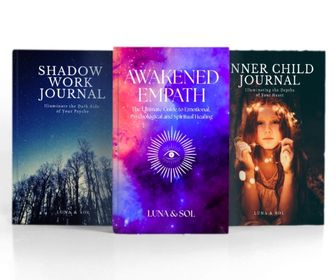
Spiritual Awakening Bundle:
⭐️⭐️⭐️⭐️⭐ "This was probably one of the best purchases I made in a long time … These are some of the most valuable texts I’ve ever read, and I'll never forget the path they started me on. Thank you so much for writing it and putting it out there for us to find." – Heloísa
The ego is a necessary biological survival mechanism, and I’m not saying to go and “kill your ego.” But if you can see that trying to “be in the present” from the stance of the ego actually blocks your capacity to recognize that you are Life itself – which is by nature always here-now – then you’ll see why it can feel so difficult to practice being present.
As Kiloby goes on to write,
Paradise is already here, now. It has always been right here, right now under the dream that there was a “you” who was somehow separate from it and who needed to do something to find it.
This notion of paradise or freedom that comes through recognizing ourselves as the present movement of Life itself, reminds me of an old biblical quote from Jesus in which he says,
Neither shall they say, Lo here! or, lo there! for, behold, the kingdom of God is within you.
If you’re confused or unclear about anything written in this section, I encourage you to explore the nature of your sense of self.
Exploring the field of non-duality and practicing the “Who am I” self-inquiry meditation can help tremendously.
Blocks to Being Present
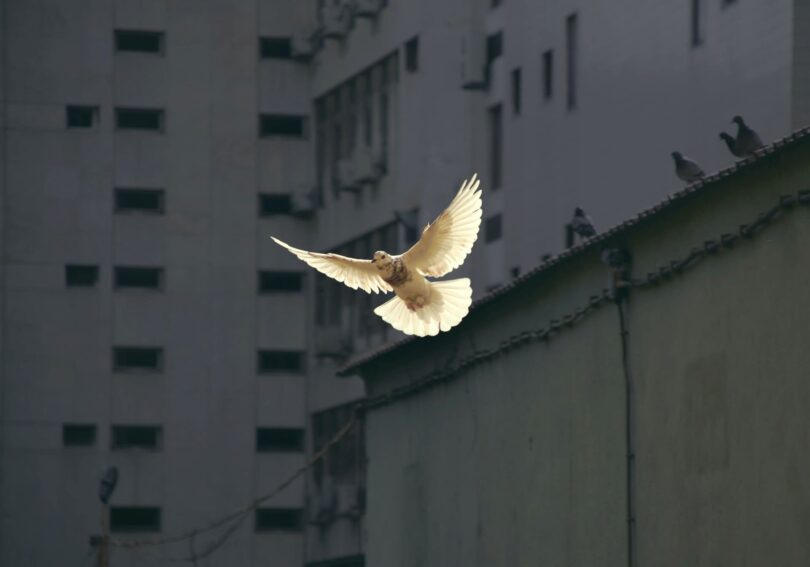
Let each of us examine his thoughts; he will find them wholly concerned with the past or the future. We almost never think of the present, and if we do think of it, it is only to see what light is throws on our plans for the future. The present is never our end. The past and the present are our means, the future alone our end. Thus we never actually live, but hope to live, and since we are always planning how to be happy, it is inevitable that we should never be so.
– Blaise Pascal
Now that we’ve explored the two biggest blocks to being present (the misleading idea of a “present moment” and the divisive nature of the ego), let’s explore a few other blocks.
There are many reasons why the mind wants to avoid being present. Here are some common blocks:
- Avoiding the present movement due to unresolved emotional or physical pain that makes being in the now painful
- The belief that happiness/fulfillment was in the past or is in the future
- Contracted energy in the body/nervous system that fuels thought, creating a cycle of body-mind escapism from the here-now
- Beliefs about how life “should be” and therefore a rejection of the present movement as being “too simple and too boring”
- A dense shadow self that creates addictive and escapist behavior
- Fear of the inevitable ego death (scary word for something actually quite beautiful) that comes from being truly present
The above list isn’t exhaustive, but you get the picture. And the reality is, all of these blocks happen in the present movement anyway, even if we aren’t aware or consciously tuned into it!
5 Practices For Being Present

It’s kind of ironic that I’m suggesting practices here for “being present,” when you are always and forever in the present and you don’t really need to “do” anything to “get there.”
And yet, life is a great paradox. From the perspective of the ego, which most of us operate from, we need something to do, something to orient ourselves with.
I’m not going to proclaim that there’s “nothing to do” and “nowhere to go” even though that’s technically true on an objective level. Why? I like to honor the objective and subjective. And subjectively, the mind needs something to chew on.
So let me throw it a bone and recommend some practices for being present:
1. Find a source of flow
The “flow state” was a term first popularized by psychologist Mihaly Csikszentmihalyi in the 1990s and describes the experience of getting so immersed in something you love that all sense of time vanishes. You’re completely in the flow and in the now.
Finding a source of flow allows you to be totally immersed in the present moment in a joyful way. The best way to find your source of flow is to discover what you love doing and what you’re passionate about.
For some people, flow comes through creating art or cooking, for others, it comes through playing sports, fixing motorcycles, or going on a hike. Ask yourself, “What do I love doing?” and notice the present movement as you’re immersed in that activity.
2. Observe babies and animals
Babies and animals are always in the present movement, in the here-and-now. Take some time to learn from them. Watch their spontaneity, their openness, their freshness.
I have two dogs in my life right now: Lila (an insanely playful Labradoodle) and Forest (a Dr. Jekyl and Mr. Hyde Shihpoo) and they are an endless source of silly, joyous, and surprisingly wise insight.
What can the innocence of children and animals teach you about being present?
3. Find the magic of solitude in nature
Nature has taught me so much about moving with the seasons, that we need to honor times of harvest and times of rest. That the frenetic pace of doing, doing, doing, without being present with each other and the season we are in, what is happening around us, is unnatural and counter to life.
– Brenda Salgado
Nature is the biggest never-ending source of dynamic movement. The movement of the wind, trees, birds, wild animals, sunshine, clouds – all of it is a magical doorway into the now.
Be assured that if you take some time to sit in nature and observe it, you’ll likely feel on a deep level what being present is all about.
I recommend solitude in nature specifically because it helps you to step out of your mind (which comes when you’re chatting with other humans) and into the flow of what is happening here-now.
4. Open awareness meditation
There are two main types of meditation (that branch off into numerous other styles of meditation): focused and open meditation.
You’re probably familiar with the “focus on your breath” style of meditation which is taught everywhere. But there’s also a slightly lesser-known form of meditation, which is open-ended and unstructured.
To practice open awareness meditation, dedicate twenty minutes or more to sitting somewhere undisturbed and simply watching whatever comes into your field of awareness. Don’t try to control, change, or focus in particular on anything. Just let it all come and go.
Thoughts, feelings, sounds, bodily sensations, colors, vibrations, memories, smells, and literally anything/everything will likely pop into your awareness. Simply watch how it dances and changes, and notice what it’s like to be present in this state.
You might even like to try out this guided open awareness meditation from Rupert Spira (which will help you out):
5. Use the mantra “so hum”
Chanting mantras is a sacred spiritual practice that has been used for thousands of years to calm and center the mind.
Above I described the process of open awareness meditation – here, by using a mantra, we’re adopting a more focused form of meditation. But this focus doesn’t have to be rigid or constricted. The purpose of mantras is to focus but also open your awareness.
Why do I recommend the “So Hum” mantra in particular? Firstly, this mantra is easy to remember and practically anyone can easily recall it during the day.
Secondly, “So Hum” can be used easily along with the breath. “So” mimics the in-breath, and “Hum” mimics the out-breath. You can even draw them out to make this mantra extra engaging as in “soooooooo” (breath in) “huuuuuummmmmmm” (breath out).
For over 12 years, we've poured our hearts into creating free content on this website. Unlike many platforms, we believe this guidance should be accessible to everyone. If this post empowered you in any way, please consider making a donation to keep us going. Any amount (one-time or ongoing) makes a huge difference.
Thirdly, So Hum is a Sanskrit word that translates to “I am that” which beautifully mirrors what I wrote previously in this article: that beneath the ego, we are Life itself appearing as this present movement. In other words, “I am that” (“So Hum”).
The So Hum mantra can be used throughout your day either silently in your mind, in a whispered breath, or out loud (depending on the situation). This is a mantra that can give your mind something to gnaw on while simultaneously quietening down your inner landscape enough to recognize the present movement of what is happening, right here, right now.
I like to use this mantra in a spontaneous sing-song way so that it doesn’t become monotonous. Be creative and know that you don’t need to confine your mantra to a dull drone or a compartmentalized practice that you do for only part of the day. Live and breathe it!
And as you’re saying the mantra, notice whatever is happening right now – that could be seeing a pile of dog shit on the sidewalk, listening to a car zooming by, feeling pain in your arms, hearing a bird chirping, feeling your heart thumping … or literally anything!
Final Words

Being present doesn’t need to be a chore, something we “arrive to,” a virtue we cultivate, a special place we’re granted special access to, or anything of the like.
Being present is always available.
It cannot be found over there, or in thought, or in a special spiritual formula, or in an idealistic dream of a perfect spiritual seeker – that present movement of energy is here, right now. It’s even appearing as the thoughts, contractions, false identifications, mental stories, and beliefs about having to “catch” the present “moment.”
When we shift away from seeing the here-now as a tiny slice of time that we need to fight to hold onto and recognize that the here-now is actually a dynamic, ever-changing, vivacious aliveness, being present become more fun!
We begin to see that the here-now isn’t a present “moment” but a present movement, and that deeper than the ego, we are that chi, that life force energy, kundalini, prana, Spirit – whatever you want to call it – that appears as all things.
What is your experience and relationship with being present? I’d love to hear any epiphanies or adventures you’ve been on surrounding this topic.
Also, please feel free to share this article with someone if you feel they might enjoy reading it!
If you need more help, we offer 3 powerful ways to guide you on your inner journey:
1. The Spiritual Wanderer Course: Feeling lost or uncertain about your path and purpose in life? Gain clarity and focus by learning about the five archetypes of awakening within you. Discover your deeper path and purpose using our in-depth psychospiritual map. Includes 3+ hours of audio-visual content, workbooks, meditations, and a premium test.
2. Shadow & Light Membership: Seeking ongoing support for your spiritual journey? Receive weekly intuitive guidance and learn to embrace your whole self, including your shadow side. Deepen your self-love and receive personal support from us.
3. Spiritual Awakening Bundle: Ready to soul search and dive deep? Access our complete "essentials" collection of beloved journals and eBooks. Includes five enlightening eBooks and seven guided journals, plus two special bonuses to further illuminate your path.








God, I wish I read your articles 12 years ago – about self-love, present moment, letting go of grief and anger etc! ;-) They would have helped me immensely! … I found my way out of the wilderness (scorpio is a madwoman ;-))… and I recommend your work everywhere. Thank you :-)
OH…THANK YOU SO MUCH…for ‘getting things right’ about being in the Present ‘Moment’. Definitely vibe with ‘Present Movement’ – I love it!
It changes the whole perspective and for sure, removes the outside (or mostly internal) stress of being in the ‘present’.
I would say that I would look into the word “PRESENT’ which means ‘GIFT’
Gift of Being Alive
Gift of Nature
Gift of Joy
Gift of Love
Gift of Light
And for me, my biggest PRESENT/GIFT, I find it in The Magic of Solitude in Nature – my most powerful SOUL Connection conduit.
Immersing, embracing and letting nature bathe me with its MAGIC is where that pleasurable SOLITUDE brings me back to MY SOUL, MY ESSENCE and MY SPIRIT. All ONE with NATURE.
Pure Love Light All and may you BE THE PRESENT Movement!
I think I see this most eloquently in the movement of water and waves. We are the present movement. Seeing a wave swell and crash and disappear and then return for another and another to form. Maybe this is why I find water so healing and soothing. Even at a cellular level we are constantly becoming and breaking down in order to be again. Constant beautiful movement. Thank you for this article. !
Thank you Michelle, the ocean is a lovely metaphor for the nature of this ebb and flow 😊
Busted out a huge laugh. You nailed me so perfectly with your words.
“How many times have you found yourself making all these fancy mental plans of “being as present as you possibly can” and imagining yourself as a Zen-master-to-be or advanced yogi in the making … and then a few minutes later you’re crunching down a packet of Doritos and staring vacantly at the Instagram stream on your phone?”
One moment I am in it to win-it, and then…
Thank you for exploring this topic. I struggle with keeping my mystic daydreaming/lifestyle tamed. I can live weeks in my own world thinking only a few days have passed.
Searching for help to strengthen ones-self in a world that wants you weak is truly challenging. I am thankful to have found your site.
I am in therapy at the moment and my therapist is encouraging me to be in the now as much as I can. I find it extraordinarily hard to do though, and I’m aware that even when I’m doing it, I can feel my thoughts trying to do their thing – writing the narrative of my life and so on. All I can do is keep working at it I suppose – until I reach that point where I stop and it just happens. It’s certainly worth doing, I find I notice so much more of the world when I do.
I find it interesting that we are rediscovering this as a modern phenomenon though – I’ve been listening to some audio books by Alan Watts and he talks about being present a lot, and that was in the 1950s! I suppose it’s more proof that we are a generational species and we always think we’re discovering something new even when we’re just unearthing something already discovered.
“we always think we’re discovering something new even when we’re just unearthing something already discovered” – yes, absolutely!
Hi, Love your Work, Have been reading a lot of your articles, and benefiting from the combined wisdom, love and inspiration, from all concerned. Just as a comment on the above, am wondering if the key to being present is really another way of saying being in Sync, and enjoying what ever is happening. This allows room for Joy to take place, since joy can only occur when one is fully present and not separate or striving for anything. Its like what you recommend, when you observe small children and animals, who are one with all there is. Anyway I guess, its something we have lost, and can be regained once we stop striving, and simply resort to a state of Being, Consciousness & Bliss aka SatChitAnanda
Thank you pasquale. It’s an interesting notion to be ‘in sync’ with reality, or what’s happening.
The distinction I would see is that the concept of ‘sync’ still implies you as a separate entity from what you are ‘in sync’ with.
This points more to the present moment realization that we are, what we’re experiencing, and there’s no division of “I’ and “It” that needs syncing; it’s more about polishing the reflection of a dirty mirror.
I hope that helps. :)
Wonderful article with some new perspectives which will help me, especially love the transmutation from moment to movement – yes! Thank you x
WHAT I LOVE ABOUT THIS ARTICLE YOU WROTE.
IT LEADS ME TO REALISE THAT THE I AM IS BOTH THE SEA AND THE BOAT.
THE EXPERIENCE AND THE KNOWLEDGE IS IN THE QUOTE.
EVEN THOUGH THE THING IS NOT THE DESCRIPTION OR WORD WROTE.
GED AUSTIN AKA THE URBAN POET.
That is a profound realization Ged!
Beautiful! Thanks Nicky
Yes! I have been thinking lately a lot about how to achieve a longer lasting feeling of “presence” or being present in the Now, just to release all the horror and chaos going on in the world. Trying to get it out of my mind. Then it occurred to me that the easiest way for me to achieve this state is when I’m with my 11 month old grandson. When I’m with Ezra, it’s like I get permission to just be with him and not have to engage with any other aspect of the world or my daily activities. I just zone out almost on his movements. It’s so relaxing and does feel like “paying attention, on purpose, in the present moment, non judgmentally” while feeling so full of love and oneness and gratitude. I love it! This was another great teaching. Thank you!
Hi Aletheia, thanks for a practical howto on this tricky subject. An oilpatch friend of mine sometimes liked to use the phrase ‘all eaten up with a dumb arse’, forgive the crudity but it is a good example of argument in the extreme to highlight the ego problem we are talking about here which prevents us from being present in the current moment. If one is so ‘eaten up’ then application of the mantra ‘So Hum’ may not generate the intended result. Here is a suggestion for a curtain raiser to that. As mentioned previously I have no problem entering into the deeper meditational states and so my daily practice, after breath-visualization work to achieve the parasympatheic NS state, is to deep dive and connect with Gaia which is the planetary Life source. Therefore, being familiar with the transformative power of that connection, I would like to suggest a simple first step to clean up the ‘dumb arse’ ego crap that gets in the way of meditation. It is a square breath mantra – “YES / NO”. On the ‘YES’ in breath one draws up energy from the center of the Earth through the spinal column and out into the heavens. At the start of the ‘NO’ out breath one brings into attention all of ones negative ego crap and then breaths it out with a firm ‘NO’ to dis-empower its hold on the consciousness. Dummies do respond to discipline. During the breath holds the focus is placed on the Gaia-Life (out) and Source-Light (in) universal states. I like to view both of these as a brilliant golden light such as the planet Venus which is currently resplendent in the pre-dawn sky. Such an image is easy to imagine. After doing this for awhile the ‘So Hum’ mantra meditation should be much easier.
Nice, thanks for this Robert. I’ve never heard of this “yes/no” breathwork practice, but it should help dummies like me who struggle with an influx of mind activity sometimes haha (said lovingly) :’-D